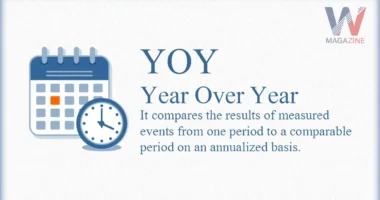Table of Contents
What Is the Meaning of Per Diem?
Per diem means a daily allowance given to an employee to cover expenses during a business trip. These expenses usually include accommodation, food, and incidental costs like service fees and tips.
It can also refer to a pay system where employees are paid per day worked rather than receiving a weekly salary.
Many companies and employees prefer a flat per diem over the more time-consuming procedure of completing detailed cost reports.
Key Takeaways
Here are the key takeaways about per diems:
- Per diems are daily allowances given to cover the costs of business travel.
- These allowances typically include expenses for accommodations, meals, and incidentals.
- Companies may provide per diems through a company credit card, full or partial expense coverage, or fixed daily rates.
- Most firms use standard rates set by the federal government as a guideline for their per diems.
- Per diem payment also refers to the compensation earned by employees for the number of days they labor.
Understanding Per Diems
Each company determines its own per diem rates, which are used to recompense employees who must travel for work.
- Company credit cards: Some companies provide corporate credit cards to their employees. Employees use these cards to pay business expenses directly while on the job, without having to pay any expenses out of pocket.
- Full or partial expense coverage: Full or partial expense coverage: Some firms cover all employee expenditures, while others set specific charges, such as housing, meals, and incidentals.
- Fixed amounts: A lot of companies offer a set daily rate to their workers. With this per diem, employees are expected to pay for all or part of their expenses.
Per diem also refers to per-day compensation received by some workers. They receive wages based on the number of days worked or the quantity of work done, rather than being paid a regular salary for a full-time job. These workers are usually on temporary or short-term contracts. For example, Per diem pay is given to substitute teachers and travel nurses.
Per Diems for Government Employees
Per diems for federal government employees who travel for work are set by the U.S. General Services Administration (GSA). Businesses base their own per diem policy on this federal per diem rate.
Every year on October 1st, standard fares for both domestic and international travel become operative. About 2,600 counties in the United States are covered by the standard rate. Nonstandard, location-specific rates apply to 302 high-cost areas.
The government sets rates based on the cost of living in a company’s city. For this reason, it sets rates that are either greater or lower than the going rate for specific places.
Per Diems Higher Than the Federal Rate
When per diem payments exceed the standard government rates, employees are required to pay tax on the excess amount. They have the option to return any excess amount above the government rate to the company.
The excess payout appears in Form W-2 Box 12. In most cases, there is a tax on the entire per diem payout if a business expense report is not submitted to the employer within 60 days of the incident.
Per Diems are Equal to the Federal Rate
When the per diem is equal to or less than the federal per diem rate, it isn’t considered part of an employee’s wages and isn’t taxable. However, employees must submit a business expense report to their employer to substantiate their expenses.
Within 60 days of the trip’s end, the employer must receive the necessary report, which must contain the following details:
- Business purpose of the expense
- Date, time, place, and amount of the expense
- Receipts for lodging
The report should also be accompanied by receipts for out-of-pocket expenses. It’s not necessary for employees to submit meal and incidental receipts if they receive a per diem, though the Internal Revenue Service (IRS) requires lodging receipts.
On Form W-2, nontaxable payments are shown apart from taxable income.
Important: Employees are required to pay taxes on any amount over the federal government’s standard per diem rate that they don’t return.
Per Diems for Self-Employed
For self-employed individuals, per diems can only be used for the cost of meals. Self-employed individuals are required, like other employees, to maintain a record of expenditure reports that attest to the time, place, and objective of the business trip. Receipts may also be required in some cases, so it’s a good idea to keep them.
Per Diem Rates for 2024
Every year on October 1st, the GSA releases the new per diem rates.
The standard room rate for 2024 was $107, up from $98 in 2023. The per diem rates for nonstandard areas, which are applicable to 302 locations and are often more than the standard rate, are at or above the lodging rates projected for 2023.
Rates for the meals and incidental expenses (M&IE) per diem tiers remain unchanged from 2023’s $59 to $79. The standard M&IE rate also remains unchanged at $59.
Tip: Use the Travel Resources Per Diem Look-Up page from the GSA to determine your per diem using government rates. To view the results, enter your travel destination, dates, and year, then click “Search.”
You can check your Per Diem rates by following this link: https://www.gsa.gov/travel/plan-book/per-diem-rates
Different Types of Per Diem Payments
Every company handles per diem payments differently. They can give fixed daily prices, issue credit cards, or pay all or part of the costs. Certain companies could mandate that workers pay for their own expenditures and then submit a reimbursement request. Others pay the per diem by check as an indication that it is separate from the employee’s income.
Business expenses may be entirely or partially covered by per diem payments. Businesses may charge a per diem rate for just meals or for housing and meals combined. For example, a partial per diem may provide $100 to cover meals only, while lodging expenses and incidentals are to be paid out of pocket.
Fixed Rates
When a company uses the fixed per diem technique, it typically pays its employees a set amount each day. For example, An information technology (IT) consultant working for a week in a different city might be paid $200 each day, which would cover $100 for lodging, $50 for meals, and $50 for incidentals.
Unspecified costs that are borne by employees at their discretion are known as incidental expenses. These could cover the price of room service, laundry, internet usage, tipping, and other expenses.
Employees will be compensated based on the IRS mileage reimbursement rate if they drive their own vehicle while on work travels. The deductible expenses of using a car for work are determined using this optional rate. The tariff is 67 cents per mile for 2024, which is 1.5 cents more than for 2023.
Out-of-Pocket Expenses
Companies typically require employees to make claims when they are expected to cover their own expenses. Businesses then reimburse their employees for these out-of-pocket costs if claims are accepted.
This method is more time-consuming than a per diem, as it requires staff to review claims and receipts, approve or decline reimbursement requests, and issue payments to employees.
Benefits of Per Diem Payments
Companies and employees can benefit from per diem allowances in several ways:
- Per diems help companies budget future expenses more accurately.
- They reduce or eliminate the need for reviewing and managing receipts.
- Per diems minimize paperwork for both companies and employees.
- They streamline the tax-deduction process for businesses when used for travel.
- Per diems ensure that employees don’t get taxed on allowances that serve as reimbursements.
- Employees can keep excess amounts of per diems that they don’t spend, although they will owe tax on that excess.
FAQs
What Qualifies for Per Diem Payment?
Per diems cover expenses related to business travel, including lodging, meals, and incidentals such as service-related fees and tips.
Why Do Companies Pay Per Diem?
Companies pay a per diem rate as an easier and more cost-efficient way to reimburse employees for travel costs. Both the employer and the employee are spared the chores of accounting for every penny spent.
Many companies prefer to pay certain workers, such as travel nurses and substitute teachers, a per diem rate because it is less burdensome than adding them to the regular payroll system.
What Are the Benefits of Per Diems?
Per diem payments cover certain travel expenses for employees that must be reimbursed in some way. They can simplify and even eliminate expense paperwork for both employees and companies. They are tax-deductible for a business and are not considered income for an employee.
The Bottom Line
A per diem is a daily allowance given to employees by a company to cover certain expenses while traveling for business. These expenses typically include lodging, meals, and incidentals. Some companies issue a credit card to employees to pay for their per diem expenses.
A company’s per diem rate is often the same as the rate set by the GSA. The reason for this is that if the firm set a higher per diem rate, the employee would have to pay tax on the portion that goes above the government rate (unless they gave it back to the company). Per diems can be an efficient and effective way for both companies and employees to manage travel expenses.
Stay updated with Wordle Magazine for latest financial tips.









